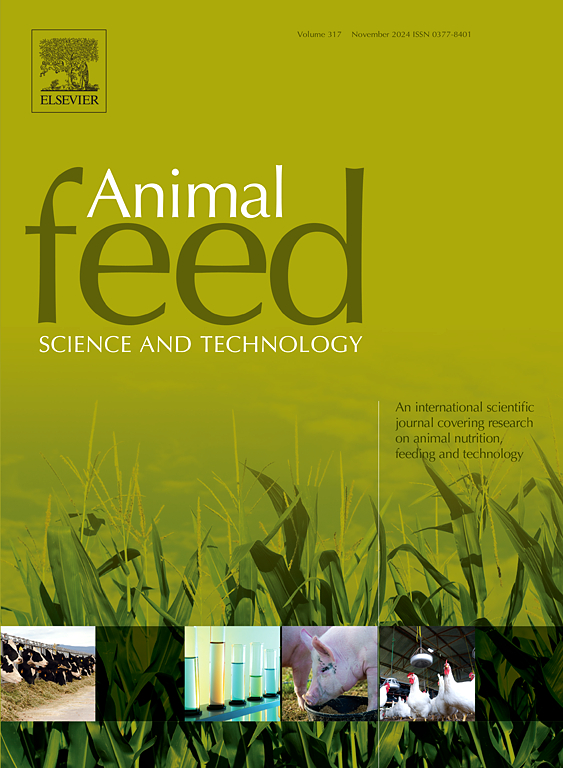Dietary yeast hydrolysate improves growth performance, antioxidant capacity, immunity, and intestinal microbiota of juvenile giant freshwater prawn (Macrobrachium rosenbergii)
IF 2.5
2区 农林科学
Q1 AGRICULTURE, DAIRY & ANIMAL SCIENCE
引用次数: 0
Abstract
The present study investigated the influence of dietary yeast hydrolysate on growth performance, antioxidant capacity, immunity, and intestinal flora of juvenile giant freshwater prawn (Macrobrachium rosenbergii). Five experimental diets were formulated by incorporating 0%, 0.5%, 1%, 2% and 4% of yeast hydrolysate into the basal diet hereafter referred to as YH0, YH0.5, YH1, YH2 and YH4, respectively. The diets were administered to 50 juvenile M. rosenbergii with an initial weight of 0.0451 ± 0.003 g in triplicates for eight weeks. The findings revealed that the prawns fed on YH0.5 and YH1 diets increased significantly weight gain and specific growth rate. The prawns fed on the YH1 and YH2 diets had significantly higher superoxide dismutase and glutathione peroxidase activities in the hepatopancreas, while decreased malondialdehyde content. Moreover, the prawns fed on the YH1, YH2 and YH4 diets elevated significantly alkaline phosphatase and acid phosphatase activities in the serum. Furthermore, the prawns fed on the YH1 and YH2 diets had significantly higher total nitric oxide synthase activity and nitric oxide content, but had lower aspartate aminotransferase and alanine aminotransferase activities in the serum. The prawns fed on YH0, YH1 and YH4 diets were analyzed to explore the changes in intestinal microbiota. The prawns fed on the YH4 diet had significantly higher Shannon and Chao indices than those fed on YH1 diet. Feeding the prawns on the YH0 diet increased significantly Bacteroidetes phylum relative abundance than those fed on the YH1 and YH4 diets. Moreover, the prawns reared on YH0 and YH4 diets had significantly higher Saccharibacteria phylum relative abundance compared to those fed on the YH1 diet. Flavobacterium, Lactococcus, Enterobacter and Lysobacter spp. were the dominant taxa in the gut microbiota across all treatments, with Flavobacterium sp. being the most abundant genus in the prawns fed on the YH0 diet. The amount of dietary yeast hydrolysate required for optimum growth performance, antioxidant capacity and immunity in M. rosenbergii ranged from 0.9% to 2.6%. Collectively, these findings suggest that, moderate dietary yeast hydrolysate supplementation exerts improves growth performance, antioxidant capacity, and immunity in M. rosenbergii. Furthermore, dietary yeast hydrolysate modulates intestinal microbiota composition.
求助全文
约1分钟内获得全文
求助全文
来源期刊

Animal Feed Science and Technology
农林科学-奶制品与动物科学
CiteScore
6.00
自引率
6.20%
发文量
266
审稿时长
3 months
期刊介绍:
Animal Feed Science and Technology is a unique journal publishing scientific papers of international interest focusing on animal feeds and their feeding.
Papers describing research on feed for ruminants and non-ruminants, including poultry, horses, companion animals and aquatic animals, are welcome.
The journal covers the following areas:
Nutritive value of feeds (e.g., assessment, improvement)
Methods of conserving and processing feeds that affect their nutritional value
Agronomic and climatic factors influencing the nutritive value of feeds
Utilization of feeds and the improvement of such
Metabolic, production, reproduction and health responses, as well as potential environmental impacts, of diet inputs and feed technologies (e.g., feeds, feed additives, feed components, mycotoxins)
Mathematical models relating directly to animal-feed interactions
Analytical and experimental methods for feed evaluation
Environmental impacts of feed technologies in animal production.
 求助内容:
求助内容: 应助结果提醒方式:
应助结果提醒方式:


